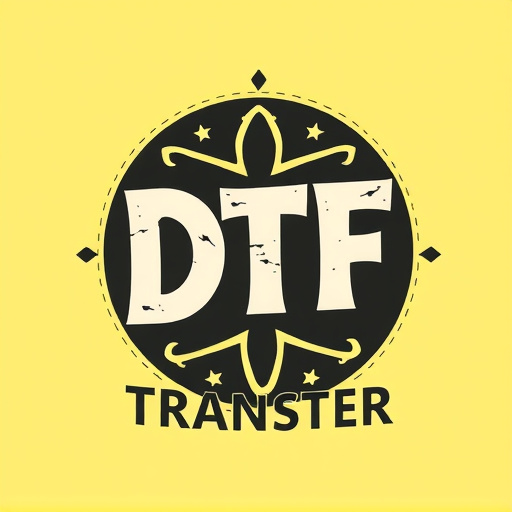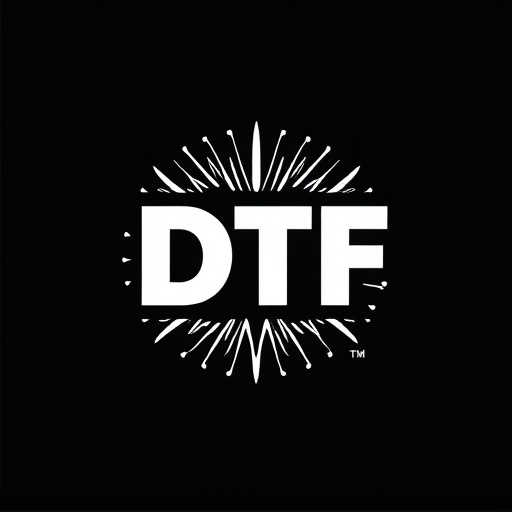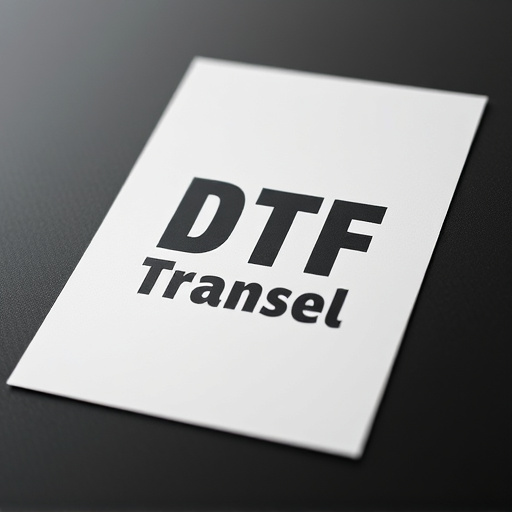Direct-to-Film (DTF) transfer is a cutting-edge process that allows commercial clients to reproduce and enhance content, preserving original quality and aesthetic for high-end commercials, short films, and music videos. This method, requiring specialized equipment and expertise, combines film's cinematic look with digital precision. DTF offers significant advantages over traditional methods, ensuring unparalleled detail, color, and texture preservation, streamlining production, and maintaining brand consistency. The process involves expert evaluation, conversion to digital format, enhancement, transfer to film stock, and optimization through advanced technologies like inkjet/laser printers and high-resolution scanners. DTF's versatility is demonstrated across retail, advertising, entertainment, and art industries, with case studies showcasing its success in delivering high-quality visuals and engaging experiences. Meticulous pre-production planning, high-quality source material, consistent camera settings, professional equipment, precise color grading, and regular backups are crucial for a smooth DTF transfer.
“Direct-to-film (DTF) transfer production is a cutting-edge process revolutionizing commercial content creation. This article delves into the intricate world of DTF, offering a comprehensive guide for businesses seeking high-quality film transfers. From understanding the fundamentals to exploring modern technology, we uncover the benefits and intricacies involved in this game-changing method. Get ready to explore successful case studies, best practices, and the latest equipment shaping the future of commercial DTF transfer production.”
- Understanding Direct-to-Film (DTF) Transfer: A Comprehensive Overview
- Benefits of Choosing DTF for Commercial Clients
- The Process: From Source Material to Final Film Transfer
- Equipment and Technology in Modern DTF Production
- Case Studies: Successful DTF Projects for Various Industries
- Best Practices and Tips for Seamless DTF Transfer Production
Understanding Direct-to-Film (DTF) Transfer: A Comprehensive Overview

Direct-to-Film (DTF) transfer is a cutting-edge process that offers commercial clients an innovative way to reproduce and enhance their content. This technique bypasses traditional intermediate steps, enabling direct recording onto film stock from digital sources. By doing so, it preserves the original quality and aesthetic of the source material while introducing a unique cinematic look. DTF Transfer is particularly appealing for high-end commercials, short films, and music videos that require exceptional visual fidelity and a distinctive analog ambiance.
The process involves specialized equipment and expertise to ensure precise and accurate results. A digital file, often in high-resolution formats, is prepared and aligned with the chosen film stock. This preparation includes color grading, resolution optimization, and ensuring proper frame rate matching. Once ready, the digital data is transferred onto the film, creating a negative that can then be developed and used for printing or further post-production processes. DTF Transfer provides an alternative to digital projection, offering clients a unique medium for their content that combines the aesthetics of film with the precision of modern technology.
Benefits of Choosing DTF for Commercial Clients
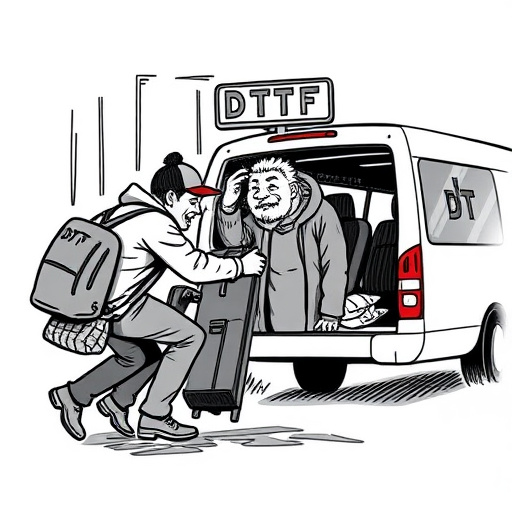
Choosing Direct-to-Film (DTF) transfer production for commercial clients offers numerous benefits that set it apart from traditional methods. Firstly, DTF provides an unparalleled level of quality and clarity. By bypassing intermediate digital steps, the final product retains the original film’s intricate details, vibrant colours, and rich textures, ensuring a visually stunning experience for viewers. This is especially advantageous for commercials aiming to capture attention and leave a lasting impression in a highly competitive market.
Additionally, DTF transfer streamlines the production process, saving time and resources. It eliminates the need for extensive editing and colour correction post-production, as the final film is ready for immediate use. This efficiency translates into faster turnaround times for clients, allowing them to launch their campaigns promptly. Moreover, DTF’s ability to preserve the original film’s aesthetic makes it ideal for maintaining brand consistency and delivering a cohesive visual identity across various marketing channels.
The Process: From Source Material to Final Film Transfer

The process of Direct-to-Film (DTF) transfer for commercial projects involves a meticulous journey from source material to the final film product. It begins with the client providing their raw footage, which is then carefully evaluated by experts to ensure quality and compatibility. This initial step is crucial in determining the best course of action for the transfer, as different formats and resolutions require specific handling.
Once approved, the source material is converted into a digital format suitable for processing. Advanced software and specialized equipment are used to enhance and restore the footage, ensuring color accuracy and clarity. This includes removing unwanted artifacts, adjusting exposure, and stabilizing shaky footage. After this digital enhancement, the film is then prepared for the actual transfer process, where it’s carefully transferred onto high-quality film stock, capturing every detail for a stunning final product.
Equipment and Technology in Modern DTF Production
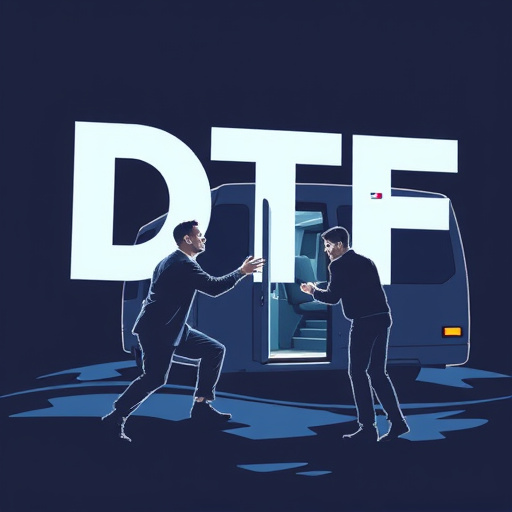
Modern direct-to-film (DTF) transfer production relies on a sophisticated blend of equipment and technology to achieve high-quality results. Digital printers, for instance, have transformed the industry by enabling precise color reproduction and intricate detail capture. These printers use advanced inkjet or laser technologies to directly apply images onto various media, from transparent films to flexible substrates.
Additionally, cutting-edge scanning systems play a pivotal role in DTF production. High-resolution scanners meticulously digitize original content, whether it’s artwork, photographs, or textures, ensuring every nuance is preserved. This digital data is then processed by specialized software, allowing for precise adjustments and enhancements before the final print. Such advancements have democratized access to high-quality printing, catering to commercial clients across diverse industries.
Case Studies: Successful DTF Projects for Various Industries

Direct-to-film (DTF) transfer has proven its versatility and effectiveness across diverse industries, from retail and advertising to entertainment and art. Case studies highlight successful DTF projects that showcase the technology’s ability to deliver high-quality visuals and engaging experiences. For example, a major retail chain utilized DTF for in-store signage, resulting in vibrant, eye-catching displays that improved customer engagement and product sales. In the entertainment sector, a film studio adopted DTF for promotional materials, enhancing the marketing campaign with immersive, full-color visuals that captured audiences’ attention.
Additionally, DTF transfer has found applications in creative fields, such as an art gallery showcasing limited-edition prints directly on canvas, preserving the artistic integrity and ensuring each piece is unique. These real-world examples illustrate how DTF production can enhance brand visibility, capture consumer attention, and deliver exceptional visual experiences across various sectors, solidifying its position as a game-changer in modern marketing and content creation.
Best Practices and Tips for Seamless DTF Transfer Production
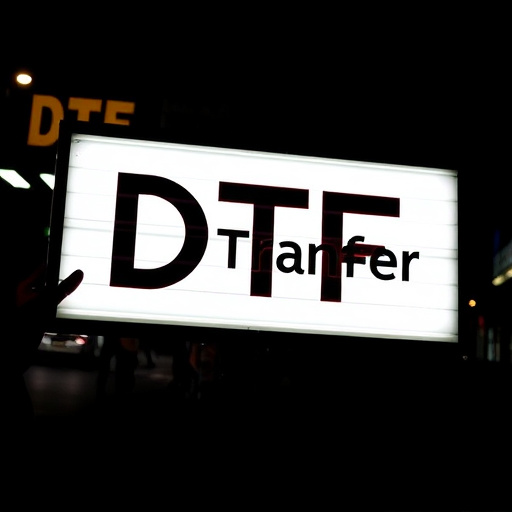
To ensure a seamless DTF (Direct-to-Film) transfer production, it’s essential to establish clear best practices and tips. Firstly, thorough pre-production planning is key; this involves meticulous script analysis, location scouting, and casting to match the vision. High-quality source material is paramount; ensuring clean, well-lit footage with adequate audio will significantly simplify the transfer process.
During production, maintain consistent camera settings, including white balance, exposure, and frame rate, to avoid technical glitches. Use professional-grade equipment and consider on-set monitoring to catch any issues immediately. Post-production demands meticulous color grading and sound mixing to preserve the original intent while enhancing visual and auditory clarity. Regular backups of data ensure against loss during the intricate transfer process.










